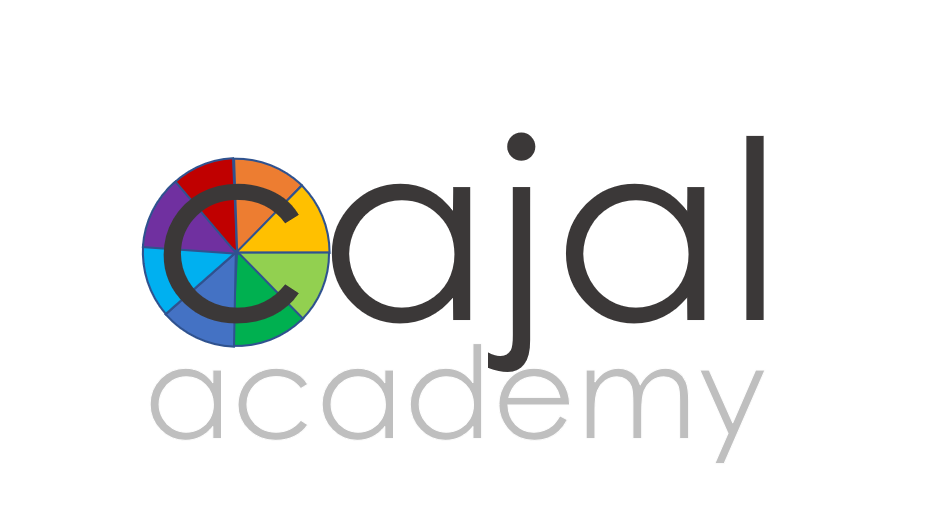Overcoming ADHD
We empower bright, gifted & 2e kids with ADHD/ADD to gain agency over their learning and social-emotional experiences
Cajal Academy applies the same ground-breaking, research-backed approach to empowering students with ADHD/ADD as it does to other learning and social-emotional difficulties. This starts with getting behind the labels to understand the data in each child’s unique profile that drives the symptoms generating that diagnosis, distinguishing between those causes that do and do not require medication, and building up lacking neurocognitive skills. The net result is not just accommodation for ADHD symptoms but actually reducing the level of attentional impairment to be managed. Read below to learn more about this powerful approach!
Addressing the symptoms of ADHD starts with finding the causes
Some 80% of the student applications we receive at Cajal Academy note a prior diagnosis of ADHD—and that begs the question why. We think the answer lies not so much in the kids as in the process through which they’ve received that diagnosis.
ADHD and other psychiatric diagnoses are made based on the Diagnostic Statistical Manual: a manual that in essence was derived to define what clinicians typically mean when they say “ADHD.” That’s sort of as if we diagnosed COVID not with a nasal swab but by seeing if someone’s systems aligned with that long list of symptoms—and ended up calling every flu and common cold a pandemic virus.
The problem with this approach is that you can arrive at a presentation meeting the diagnostic criteria for ADHD because you have any number of neurogenic causes, including language processing errors, a mood disorder, sensory processing disorder — and yes, an actual problem with the attentional system!
Taking this approach, most ADHD programs assume that challenging presentations and then start trying to give the child strategies they can use to organize themselves, homework and their backpacks despite these difficulties.
We take a different approach. At Cajal, ADHD programming starts with a deep dive into the data in the child’s profile to figure out why the child meets these diagnostic criteria, and then fashioning a solution for that underlying challenge. This includes our first-of-their-kind, research-backed Neuroplasticity Interventions, which systematically target and develop the neural network required for the child to perform a foundational neurocognitive skill.
We leverage kids’ need to move to accelerate their learning, instead of pressuring them to “sit still and listen”!
Cajal Academy’s unique program was co-founded by occupational therapist Heather Edwards, who recognized the value of movement as a means of accelerating student learning and personal growth for all kids, while providing essential regulating inputs for students with ADHD, anxiety, sensory processing disorder and a host of chronic medical conditions. That instinct is backed up by neuroscience research finding that “embodied cognition” techniques pairing motor and sensory inputs with learning increases retention and engagement. This science is the basis of our ground-breaking Body-Informed Learning: an OT- and PT-designed pedagogy that uses movement and sensory inputs to teach academic concepts—not just as a break between them.
For students with ADHD, we take this a step further, utilizing movement to provide structure and organization within the body, which translates to greater ability to organize concepts, data and thoughts. This translates to improvements in core academic skills such as ideation, initiation, sequencing and project management. As with all aspects of Cajal Academy’s approach, we don’t just do these things for our students, we teach them the science behind them and pair this with our unique Growth Mindset & Agency Coaching to help them develop a toolbox they can use to have agency over their own learning and social-emotional experiences that transfers to home, community-based activities and college.
All Cajal Academy academics are delivered through multi-disciplinary project-based learning, utilizing a framework adapted from the Buck Institute to center a design/engineering-based approach that builds essential executive function skills and can be flexible applied to the kinds of big, complicated problems that excite gifted and twice exceptional students. This translates to mastery of skills and content across the curriculum through deep, inter-disciplinary learning that is often lacking in traditional K-12 academic systems. Even more powerfully, this is an essential life skill translating to better mental health outcomes as our bright and gifted students progress through college and into the professional world beyond, as it provides a transferable process they can use to break down complex problems into a series of individual questions to be answered, and steps to be executed in order to develop a novel solution—be that a PhD in molecular biology, an innovative new musical genre or a transformative new technology.
Our bottom-up, data-driven approach to understanding and addressing ADHD is proving successful at generating cross-setting improvements in the symptoms of ADHD—in some cases to such an extent that the child no longer meets the ADHD diagnostic criteria! That said, within the heterogenous group of kids who meet the DSM criteria for the condition, there is a subset of kids whose difficulties do indeed arise from a problem with the attentional system and for whom medication may therefore be an important part of the treatment plan. Our neuropsychologist, Steven Mattis, PhD, A.B.P.P., works with families to help identify and distinguish between these types of ADHD and others for which medication may instead exacerbate the problem, utilizing specific neuropsychological assessments. Cajal Academy does not make medication recommendations ourselves, however whenever medication is a part of the child’s care plan, Dr. Mattis collaborates with the child’s prescribing physician to help provide monitoring and communication regarding the child’s presentation within our school environment, to aid them in refining dosing decisions.





